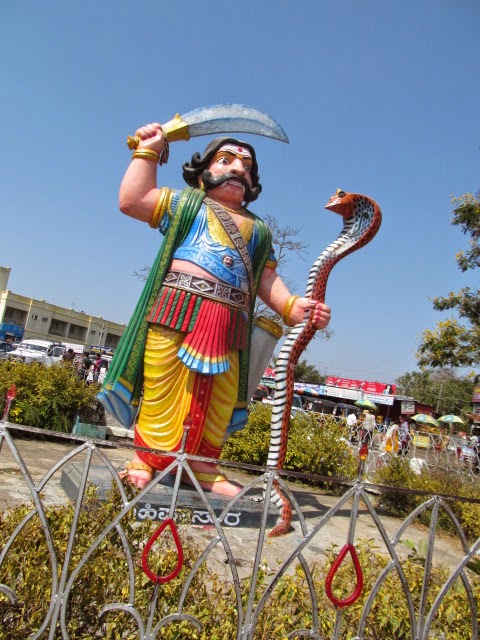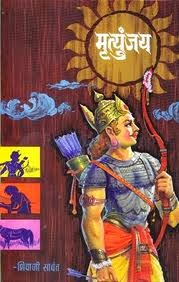Mysore Chamundeshwari Temple
 |
| The main entrance of the Chamundi Temple, Mysore |
 |
| Mahishasura, the demon who lends the city its name |
With a rich Puranic background, Devi Chamundeshwari is the main subject of the Devi Mahatmyam, which describes the victory of Goddess Durga against Mahishasura. Locals here narrate legends that Mahishasura stayed atop these very hills. The slaying of the demon after an intense nine day war which is recreated through Navratri, results in the hillock gaining its name. The temple is also counted as one of the Shakti Peethams, places of worship which have been consecrated to Goddess Sati, the wife of Lord Shiva. In the Puranas, the Shakti Peethas are described as places where the body parts of Sati's corpse fell when Lord Shiva wandered across the earth in sorrow after her immolation in the sacrificial fire of her father Daksha's yagna. It is widely believed that Sati's hair is said to have fallen here.
Originally built as a small shrine by the Hoysala rulers in the early 12th century, the Chamundi Temple assumed religious prominence when Yaduraya Wodeyar came to rule Mysore in 1399. Having been anointed as the family deity of the Mysore Royal Family, the temple has witnessed a surge of devotees and worshippers. Chamundi Hills, thus, has been a benefactor with the contributions made by three dynasties: the Hoysalas, the Vijayanagar Empire and the Mysore rulers. A common legend that is often narrated within the temple premises concerns Chamaraja Wodeyar, who became bald after a bolt of lightning struck him as he gained entry into the temple in 1573.
The temple has been built in a quadrangular manner. It consists of the main doorway and an entrance that has been christened as the Navaranga Hall, the Anthrala Mandapa, the sanctum sanctorum and the Prakara. In the Anthrala Mandapa are the images of Lord Ganesha on the left and Bhairava on the right. To the left of Ganesha is a six foot tall statue of Maharaja Krishnaraja Wodeyar-III. In the sanctum sanctorum, is the main statue of Goddess Mahishasuramardhini, made of stone and having eight shoulders. Local legends believe that the idol was established here by Sage Markandeya, the author of the Markandeya Purana, of which the Devi Mahatmyam forms a part.
Chamundi Hills is located 13 kilometres east of Mysore on a majestic hillock 3489 feet mean sea level. It offers a breathtaking aerial view of the city. From the base, it is a steep uphill involving 1008 steps and it takes roughly 30 minutes to the reach the summit. With an uneven path and steep steps for the first 650 steps, one is rewarded the spectacular darshan of Nandi, the bull of Lord Shiva and the next 350 steps are comparatively easier. However, for those unwilling to trek up to the temple, there is a direct bus from the City Bus Stand near Devaraja Market that takes you right till the summit of the temple premises.



Comments